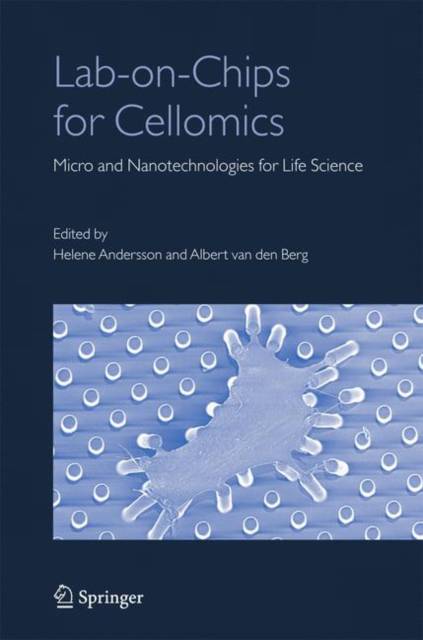
- Afhalen na 1 uur in een winkel met voorraad
- Gratis thuislevering in België vanaf € 30
- Ruim aanbod met 7 miljoen producten
- Afhalen na 1 uur in een winkel met voorraad
- Gratis thuislevering in België vanaf € 30
- Ruim aanbod met 7 miljoen producten
Zoeken
Lab-On-Chips for Cellomics
Micro and Nanotechnologies for Life Science
Albert Berg, Helene Andersson
Paperback | Engels
€ 116,95
+ 233 punten
Uitvoering
Omschrijving
Dear reader, In the past few years we have observed an interesting mutual interest of two fields of research and development in each other. Life sciences area researchers discovered the opportunities offered my micro- and nanotechnology, while people from the microfluidics and BIOMEMS area discovered the application potential of these technologies in cell biology. Unfortunately, these two research communities share little in common: they read and publish in different scientific journals, have incompatible jargons, attend separate conferences, and have a different scientific approach and culture. This is most strikingly illustrated when you give a MEMS researcher some cells to experiment with, or hand over a couple of chips to a cell biologist. Or imagine explaining a microengineer different intracellular apoptotic pathway or a cell biologist about tensile stress in underetched LPCVD membranes. And yet, there is an enormous potential of combining the expertises available in these two fields. It is our goal to illustrate this potential with this book focusing on microfluidics technologies for "cellomics", research on or with cells. In our view, the field is still too immature to compile a textbook for students, and this volume is rather meant to be a collection of first class papers of leaders in this emerging field. This volume will enable researchers from both communities to get a rapid "state of the art" overview, and also to get an impression what kind of possibilities this area offers. Micro- and nanotechnologists will get inspiration about applications, life science researchers about technological capabilities.
Specificaties
Betrokkenen
- Auteur(s):
- Uitgeverij:
Inhoud
- Aantal bladzijden:
- 364
- Taal:
- Engels
Eigenschappen
- Productcode (EAN):
- 9781402065620
- Verschijningsdatum:
- 24/09/2007
- Uitvoering:
- Paperback
- Formaat:
- Trade paperback (VS)
- Afmetingen:
- 166 mm x 231 mm
- Gewicht:
- 644 g

Alleen bij Standaard Boekhandel
+ 233 punten op je klantenkaart van Standaard Boekhandel
Beoordelingen
We publiceren alleen reviews die voldoen aan de voorwaarden voor reviews. Bekijk onze voorwaarden voor reviews.











